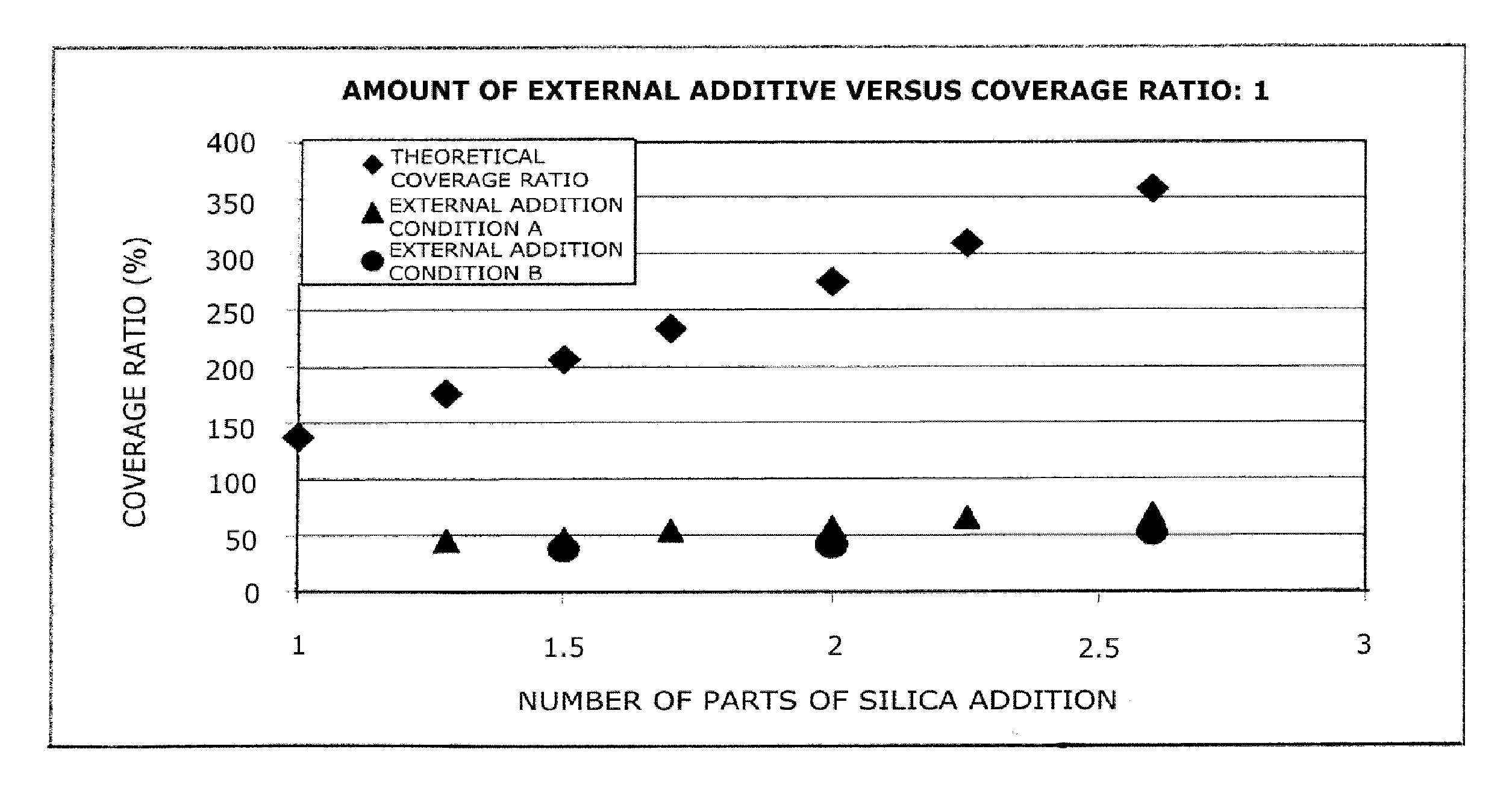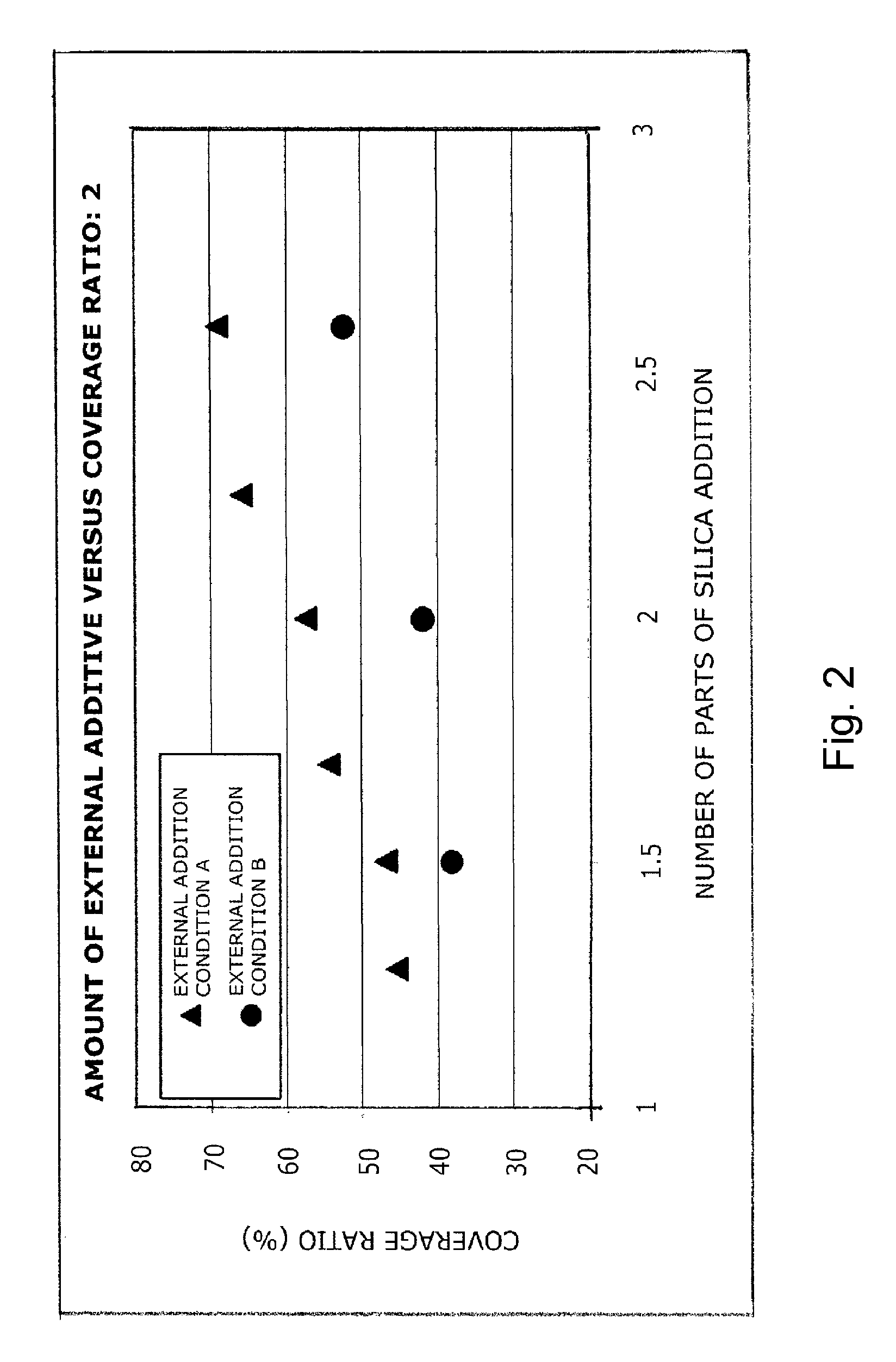Magnetic toner
a toner and magnetic technology, applied in the field of magnetic toners, can solve the problems of excessive charge of a portion non-uniform charging of the magnetic toner, and inability to uniformly charge the magnetic toner, so as to prevent fogging and reduce density
- Summary
- Abstract
- Description
- Claims
- Application Information
AI Technical Summary
Benefits of technology
Problems solved by technology
Method used
Image
Examples
example 1
The Image-Forming Apparatus
[0344]The image-forming apparatus was an LBP-3100 (Canon, Inc.), which was equipped with a small-diameter developing sleeve that had a diameter of 10 mm; its printing speed had been modified from 16 sheets / minute to 20 sheets / minute. In an image-forming apparatus equipped with a small-diameter developing sleeve, the durability can be rigorously evaluated by changing the printing speed to 20 sheets / minute.
[0345]Using this modified apparatus and magnetic toner 1, an image check was performed under a normal-temperature, normal-humidity environment (under an NN environment, 23° C. / 50% RH), followed by standing for 30 days under a severe environment (40° C. / 95% RH) and then a 50-sheet image output test in one-sheet intermittent mode of a solid image.
[0346]According to the results, an excellent image, which had little fogging in nonimage areas and in which density reduction was suppressed, could be obtained even immediately after standing in a severe environment...
PUM
| Property | Measurement | Unit |
|---|---|---|
| number-average particle diameter | aaaaa | aaaaa |
| number-average particle diameter | aaaaa | aaaaa |
| intensity of magnetization | aaaaa | aaaaa |
Abstract
Description
Claims
Application Information
 Login to View More
Login to View More - Generate Ideas
- Intellectual Property
- Life Sciences
- Materials
- Tech Scout
- Unparalleled Data Quality
- Higher Quality Content
- 60% Fewer Hallucinations
Browse by: Latest US Patents, China's latest patents, Technical Efficacy Thesaurus, Application Domain, Technology Topic, Popular Technical Reports.
© 2025 PatSnap. All rights reserved.Legal|Privacy policy|Modern Slavery Act Transparency Statement|Sitemap|About US| Contact US: help@patsnap.com



